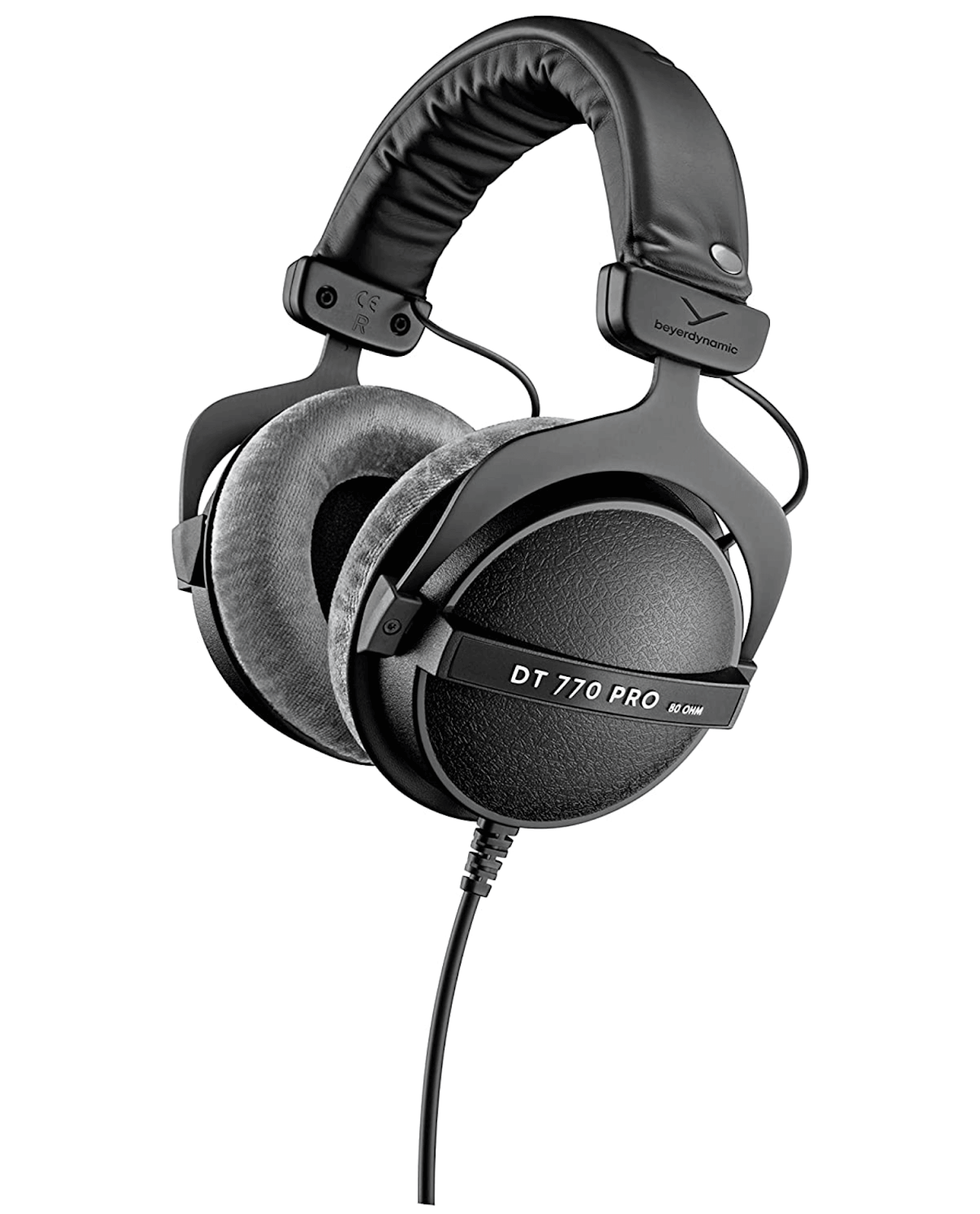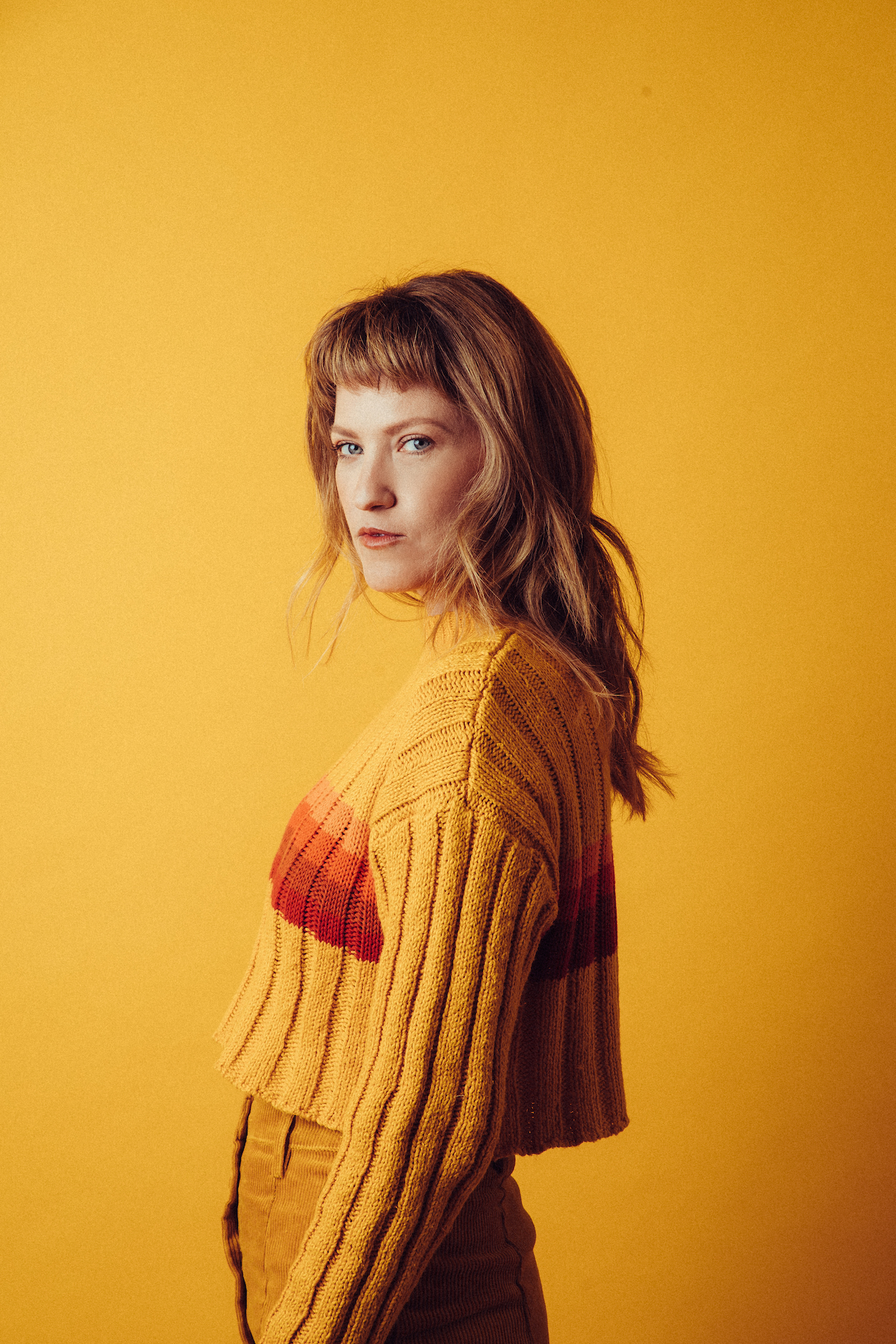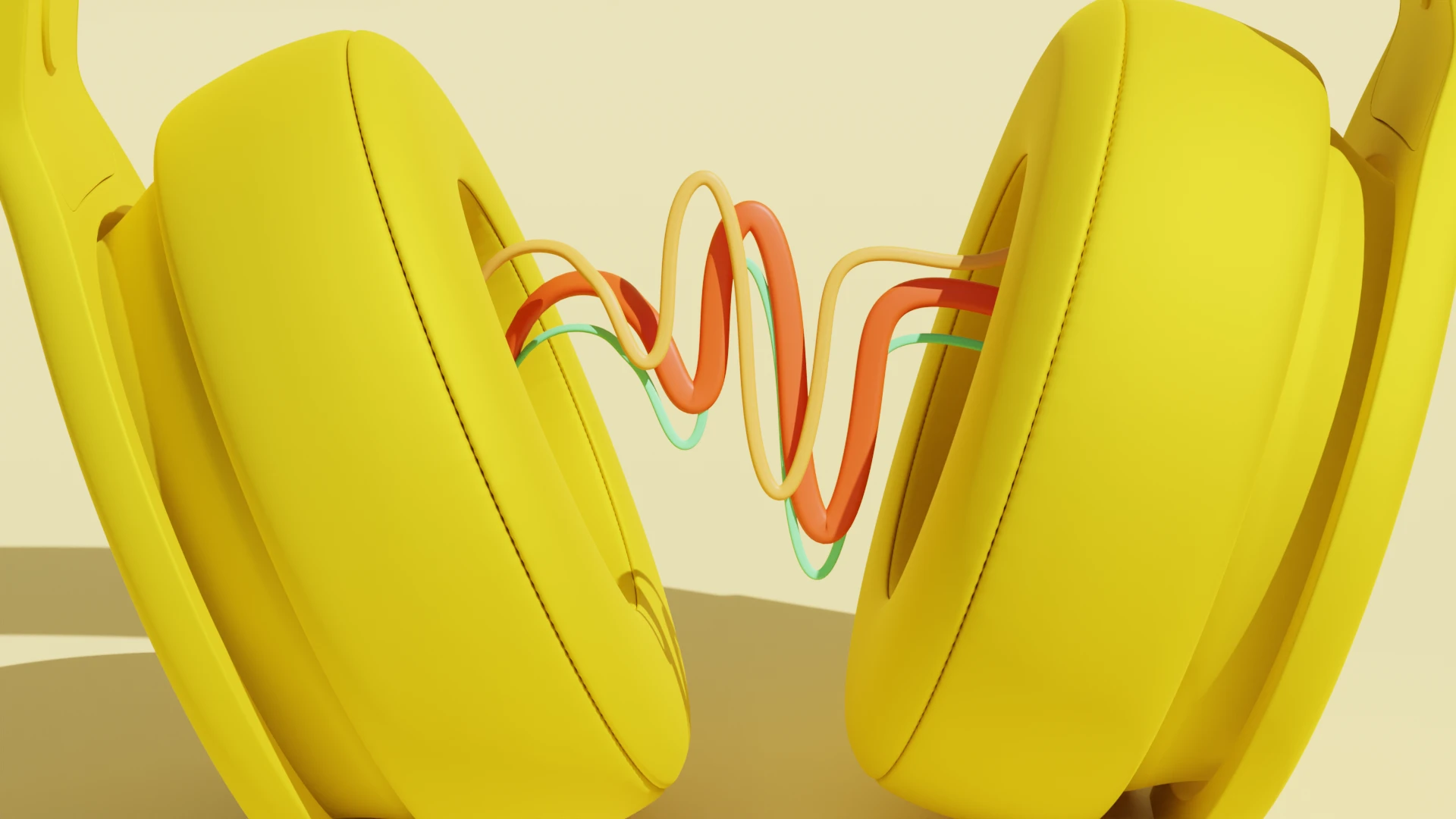The single most important piece of gear when starting a podcast isn’t a microphone, nor is it an inflatable Ira Glass. It’s headphones.
Wearing headphones while you’re recording, editing, and creating voiceovers makes a world of difference in your sound quality. But why? And what headphones have the best specs for podcasting?
Before we get to the why, let’s cut to what you should buy, which might be the only thing you really care about here.
For some expert advice, we talked to two people who have spent most of their professional lives with headphones stuck to their heads.
- Kevin O’Connell is a product specialist at Descript and an experienced, accomplished podcast producer and audio engineer.
- Los Angeles-based producer, composer, and podcast veteran Dave McKeever has spent the last 25 years working in audio recording.
We've included picks from a few other reliable sources, as well.
The 9 best headphones for podcasting
- Audio Technica ATH-M30x
- Sony MDR-7506
- Sennheiser HD 650
- Superlux HD 650
- Panasonic Ergofit
- Beyerdynamic DT t770 PRO
- Monolith by Monoprice M565C
- Rode NTH100
- Shure SRH840A
Kevin's picks
Audio-Technica ATH-M30x

The Audio Technica ATH-M30x Monitor Headphones will only run you about $80 and they’re a solid product that will serve you well at every stage of your workflow. Good sound, durable construction, with a closed back you’ll want for recording. If you need a slightly cheaper option, you can opt for the ATH-m20x model.
Features:
- 40mm Neodymium drivers
- Tuned for enhanced detail
- Single-side cable exit
- Collapsible for space-saving portability
- Circumaural design contours around the ears
- Pro-grade earpad and headband material
- Copper-clad aluminum wire voice coils
Pros:
- Enhanced audio clarity and sound isolation
- Durable design
- Compact and portable
- Comfortable
Cons:
- Non-detachable cable
Price: $79
Sony MDR-7506

The Sony MDR-7506 is a popular over-ear headphone choice in podcasting. These closed-back killers will give you a solid sound and take a beating. They’re also a real bargain at less than $100.
Features:
- Large diaphragm foldable headphones
- Gold connectors and oxygen-free copper cord
- Closed-ear design
- Neodymium magnets and 40mm drivers
- 10 Hz—20 kHz frequency response
- Includes a soft case and unimatch plug
- A ⅛” to ¼” adapter included in the box
Pros:
- Crisp and clear sound
- Durable construction
- Excellent noise isolation
- Comfortable for long recording sessions
Cons:
- Larger and heavier
- Non-detachable cable
Price: $80.99
Sennheiser HD 650

Are you really ready to up your game? Do you have $500 or so lying around? The Sennheiser HD 650 are the preferred ear-gear of sound engineers everywhere.
They’re planar magnetic headphones — that is, they create sound using a magnetic field — and they have an open-back design, so you can’t use them for podcast recording. But no headphones will deliver a better sound when you’re listening.
If you don’t have $500 for a pair of headphones (we get it), but still want the Sennheiser professional build, you can pick up the Sennheiser HD 280 pro for under $100 on Amazon.
Features:
- Lightweight aluminum voice coils
- Special acoustic silk
- Open-back design for a spacious soundstage
- Detachable, Kevlar-reinforced cable
- High-power neodymium magnets
Pros:
- Superior audio quality
- Rugged build quality
- Comfortable
Cons:
- On the expensive side
- Requires amplification
- Not best for portability
Price: $499
Dave's picks
Superlux HD 681

The Superlux HD 681 are great podcast headphones if you’re just getting started. You can usually snag them for less than $50. Just know that these are semi-open-back headphones, which means a little bit of sound may bleed out into your surroundings — so you shouldn't use them for recording.
Features:
- Semi-open design
- Self-adjusting headband
- 50mm drivers
- Thick earpad design
- Single-sided cable design
- Professional studio-standard studio
Pros:
- Great price
- Semi-open design for more realistic sound
- Self-adjusting headband
Cons:
- Big and bulky
- Sound leakage makes them bad for recording
- Non-detachable cable
Price: $49.99
Panasonic ErgoFit

“The Panasonic Ergofit in-ear headphones are great for background noise isolation, and they can provide a pretty strong sound without requiring much amplification,” Dave says.
Another plus: a lot of your podcast audience will be listening on similar budget earbuds, so they’re a good way to reproduce that experience. This Panasonic model is ultra-cheap (expect to pay $10 or so for a pair), and while they aren’t the sturdiest option out there, replacing them won’t put too much of a dent in your wallet. If you can, buy two at a time so you always have a backup pair.
Features:
- Ergonomic fit
- Wide frequency response
- Nine color options
- Extra earpad set
- Long cord
- 9mm drivers
Pros:
- Affordable for beginners
- Similar to what your audience is using
Cons:
- Lacks noise isolation
- Limited soundstage
- No in-line controls
Price: $9.99
Beyerdynamic DT 770 PRO

“Beyerdynamic has a lot of fans in the podcasting industry, and the 770’s are really fairly priced,” Dave says.
Like Kevin's Sony MDR-7506, these 'phones have a built-in wired connection, but it turns into a coiled cable, which makes it less likely to snap. And these are closed-back headphones.
But the Beyerdynamics have higher sound impedance (30–250 ohms), which means it takes a strong audio signal to bring out their full frequency range. You’ll probably need a headphone amp to boost the audio signal coming to them.
Features:
- Impressive frequency response
- Plush, soft ear pads
- High-quality transducers
- Rugged, adjustable headband
- Single-sided cable
- "Bass reflex" technology to produce controlled bass and enhanced sound fidelity
Pros:
- Excellent sound reproduction
- Velour ear cups and padded headband are incredibly comfortable
- Closed-back design is good for recording
Cons:
- Non-removable cable
- Bulky design
- Requires good amplification
Price: $159
Other picks
Monolith by Monoprice M565C

Monolith by Monoprice M565C is another great option for podcast headphones. While Wirecutter doesn’t have a podcast-specific headphone recommendation, their pick for “your first audio upgrade” should get the job done.
They give these props for high-quality sound and durability, but note that they’re a little bulky, i.e. not ideal for recording on the go. And at $200, they’re comfortably priced in the middle of the pack.
Features:
- Planar magnetic drivers
- Wood earcup housing
- Closed-back design
- High-quality padded headband
- Broad frequency response
- Detachable cables
- Premium materials
Pros:
- Excellent noise isolation
- Balanced audio reproduction
- Durable and comfortable
Cons:
- Heavier than other headphones
- May require amplification
Price: $199.99
RØDE NTH100

The Rode NTH100 are affordable studio headphones that PC Mag likes for their sound quality but also comfort (they’re designed to protect your ears during long sessions). They come with a detachable cable, which is convenient both for travel and for replacing — you won't need to buy a new set of headphones if the cable wears out.
Features:
- Custom-matched drivers
- Precision-engineered acoustic construction
- CoolTech gel designed to reduce wearing fatigue
- Contoured earcups
- Removable cable with locking connector
- Lifetime warranty
Pros:
- High-fidelity, balanced sound
- Excellent isolation
- Comfortable to wear for long periods
Cons:
- Slightly heavier than other headphones
- Many professional features may overwhelm beginners
Price: $144.99
Shure SRH840A

The Shure 840’s are another headphone that popped up on Wirecutter’s list. These home studio staples are good looking and affordable. They’re flat enough for mastering use, and enjoyable enough for wearing over long podcasting sessions.
Features:
- Proprietary 40mm neodymium drivers
- Closed-back, circumaural design
- Collapsible design
- Detachable cable lock
- Replacement ear pads
- Wide frequency response (5 Hz–25 kHz)
- Compatibility with a wide range of audio devices
Pros:
- Flat response makes them great for audio production
- Closed-back design makes them good for recording
- Affordable
Cons:
- 3-meter cable limits versatility
- No hard carrying case included
Price: $149
Why you need headphones for podcasting
As the podcast industry expands, more reporters, storytellers, and entertainers have begun assembling their own podcast studios at home for a convenient, yet still quality recording space.
If you’d like to do the same, you’ll need a podcast starter kit that includes a computer, microphones, cables, mic stands, a digital audio workstation like Descript, and possibly an audio interface. You’ll also need a set of headphones to monitor the audio files you are recording and editing. Here's why.
- They isolate sound. When you record audio, you want to record only what you mean to — and none of what you don’t. “Basically you don’t want sound from speakers to bleed into the microphone,” Dave says. “That’ll cause an echo effect and various forms of noise.” Getting a good headset for audio or video podcast production will handle this problem.
- You can easily record audio from video chats. “A lot of current podcasts are being recorded over Zoom,” Dave says, “and headphones prevent the audio from your computer leaking over into your podcast microphone.” Any form of external noise is going to give you lots of headaches when you start editing, so take noise isolation seriously and use headphones.
- They highlight the details in your recorded tracks. The audio quality provided by a good pair of headphones enables you to hear all sorts of nuanced details in your sound recordings. “Any time you’re doing dialogue editing, precision is important,” Dave says. “You need to be able to hear the close details — the ums, the ahs, the throat clears — that you wouldn’t hear on laptop speakers.”
- They let you hear what your listeners hear. “You can assume that many of your listeners will be using headphones,” Dave says. “You always want to think about an end user’s experience as you work on the product. By editing with headphones, you’re creating a good experience for people who will be listening to your work using headphones.”
- They provide a better bang for your buck than loudspeakers. “When it comes to top-notch sound reproduction and frequency response, it can be a lot cheaper to get amazing headphones than to get an amazing loudspeaker system,” Dave says. If you want to get a stereo system with a lot of power and a full audio frequency range, you could easily spend thousands (or tens of thousands). But with headphones, you can get a similar sonic experience for less than $200. Even when you ramp up to ultra high-fidelity planar magnetic headphones, the vast majority of models cost less than $1000. It’s a budget-friendly way to get really immersive audio.
They also prevent a big problem in remote calls: If someone’s using speakers instead of headphones, their mic can pick up whatever’s coming out of those speakers—basically re-recording the other person’s audio. That’s impossible to fix in post. By wearing headphones, you keep each person’s audio pristine and avoid accidental echoes or doubling.
What to look for in headphones for podcasting
There are enough headphone options out there to confuse a dedicated audiophile, let alone someone buying their first pair for podcasting. Here are a few rules of thumb for picking a set of headphones.
- Over-the-ear headphones are typically better than on-ear headphones. On-ear headphones have ear pads that sit right on your ears, while over-the-ear headphones have a wider frame that encompasses your entire ear. “Over-the-ear models are better at blocking out outside noise,” Dave says. “They also tend to be more comfortable for wearing over long periods of time.”
- Pay attention to frequency response. The human ear can hear frequencies ranging from 20 hertz on the low end to 20 kilohertz on the high end. In audio equipment, frequency response refers to a device’s ability to capture these extreme frequencies. This element is more important for music than for speech, so if your podcasting career only involves recording vocals and editing dialogue, you don’t need to obsess about frequency response. “But you may only want one pair of headphones for editing both dialogue and audio, in which case you may as well get a set that works great for all purposes,” Dave says.
- You’ll want closed-back headphones for recording, but open-back headphones can work for editing. There are two main types of headphones: closed-back headphones that completely seal off your ear for maximum sound isolation, and open-back headphones that intentionally let in some ambient sounds (and let some of your headphone sound bleed out to your surroundings). “When you’re recording, closed-back headphones are the way to go,” Dave says, “because they prevent audio from bleeding out of your headphones and into the mic.” But don’t write off open-back headphones. Most audiophiles consider them the gold standard for sound reproduction. The open-back design is better for creating the illusion that musicians or speakers are in the room with you. If you want to use open-back headphones, reserve them for the editing and mixing stage.
- Avoid noise-canceling headphones. These models can be great for blocking out unwanted sounds in noisy environments, but part of their sound-canceling design involves introducing new sound waves that counteract ambient sounds from the outside world. These added frequencies can alter the accuracy of your mix. Use noise-canceling headphones for listening to podcasts and music in your spare time, but use a simpler model for recording and editing.
- Don't underestimate the value of comfort. “When you’re doing a lot of editing, fatigue is a real thing that happens, and there are wild disparities in comfort among different headphone models,” Dave says. “If possible, wear the headphones for a sustained period of time before buying".
The difference between wired and wireless headphones
Among many other options for choosing a pair of headphones, you must also decide if you want wired headphones or wireless headphones. Here’s what Dave says are the key differences between the two options.
- Wireless headphones typically transmit sound using Bluetooth. Bluetooth is a wireless radio standard that lets one device transmit an audio signal to a nearby device, among other things. “Bluetooth sound has drastically improved in recent years, but it still involves a good deal of compression,” Dave says. That means it will cut off certain audio frequencies to create smaller digital packets of information — and that means lower quality sound. As a general rule, we'd recommend steering clear of Bluetooth headphones when you're making a podcast (other than for listening to your show before you publish).
- Wired headphones can have built-in cables or detachable cables. “Detachable cables are kind of nice because if you accidentally step on your headphone cable, it’ll just pop out,” Dave says. “You don’t worry about possibly breaking your whole headset. Plus if your cable goes bad, you can replace it without replacing the entire set of headphones.” Nearly all high-end headphones use detachable cables, but some very solid studio headphones still used attached cables.
- Wired headphones can come with straight cables or coiled cables. A straight cable is thin, lightweight, and easy to wrap up. It also breaks a bit too easily, so you have to be careful with cables like these. A coiled cable tends to be much heavier and much more resistant to wear and tear. That’s because coiled cables keep too much stress from landing on one single segment of the wire. Many of Dave’s favorite headphone models use coiled cables.
Podcast headphones FAQ
Should I buy headphones with a built-in microphone?
That depends on what you’re looking for! If you’re only recording close-up audio like voiceover and interviews, headphones with a built-in microphone can be a cheaper, easier and more compact option than having to wrangle multiple objects for every session (and, as we’ve said before, you don’t need a high-quality mic to make a great podcast). On the other hand, if you want the flexibility of picking up ambient noise — or anything that’s not coming out of your mouth — a standalone mic is a better option.
Can you record a podcast using AirPods?
Sure, everyone and their mom seems to own AirPods these days. They’ll do in a pinch, especially if you just need to monitor a quick edit. But if you’re trying to record polished audio, they’re not the best: they don’t capture rich detail, battery life is unpredictable, and a dropped Bluetooth connection can kill the moment. They’re better than nothing, but if you can snag a decent wired headset instead, you’ll save yourself a lot of headaches.
What headphones does Joe Rogan use?
Ah yes, America’s most famous podcaster. Joe Rogan is proof positive that professional podcast equipment doesn’t have to break the bank: Rogan records his podcasts using Sennheiser Professional HD280 monitoring headphones, which run about $100.
Frequently asked questions
Do I need special headphones for podcasting?
You don’t need fancy or expensive headphones—any pair that lets you hear your recording in real time is better than none. That said, choose a model with a comfortable fit and minimal sound leakage so you can accurately monitor your audio.
Why do podcasters wear headsets?
Headsets (or headphones) let you hear your voice and guests in real time, so you can catch audio issues on the spot. They also reduce sound leakage and echo by keeping audio out of your mic.










































